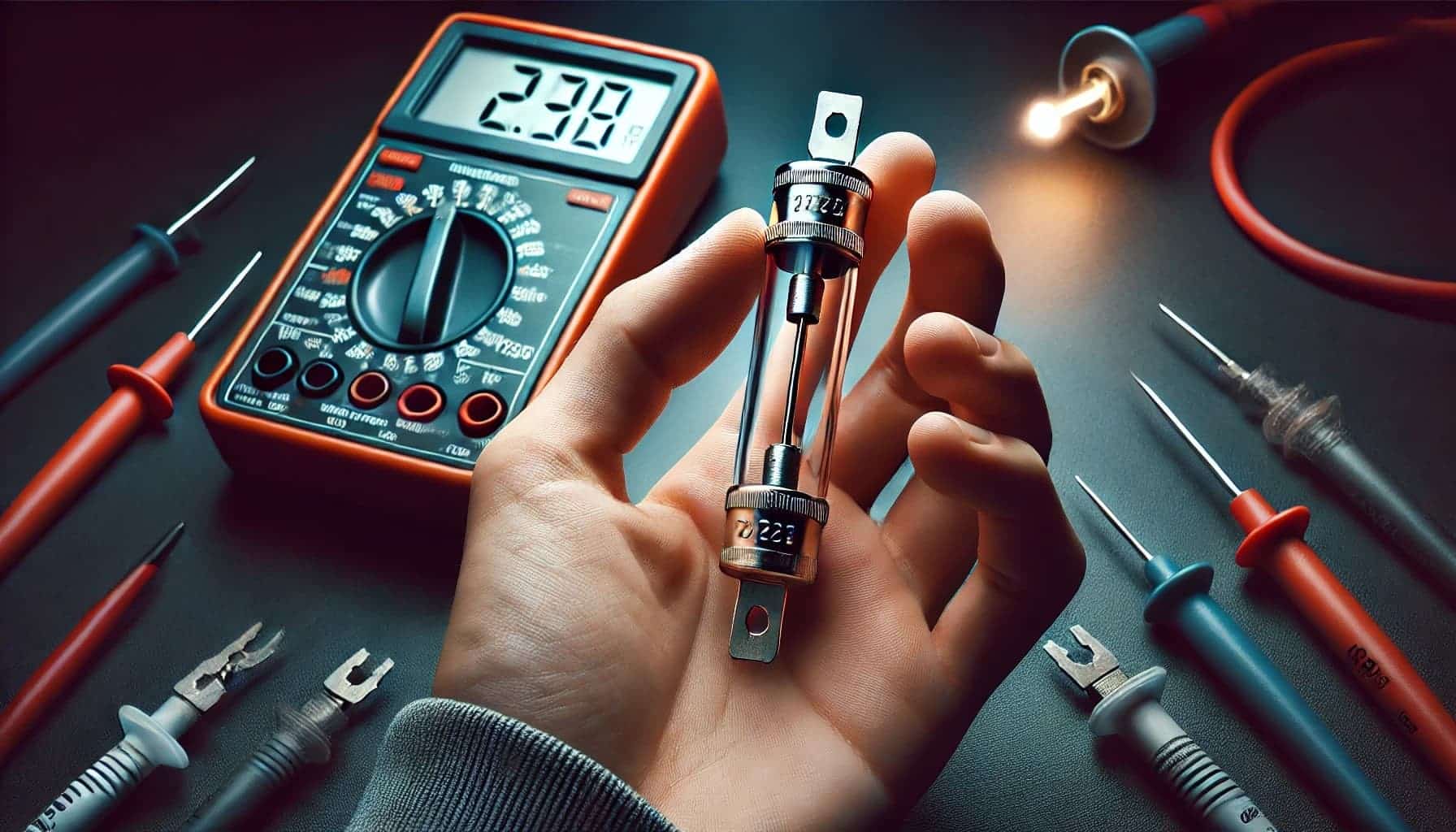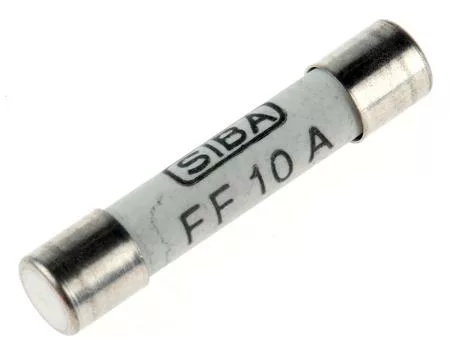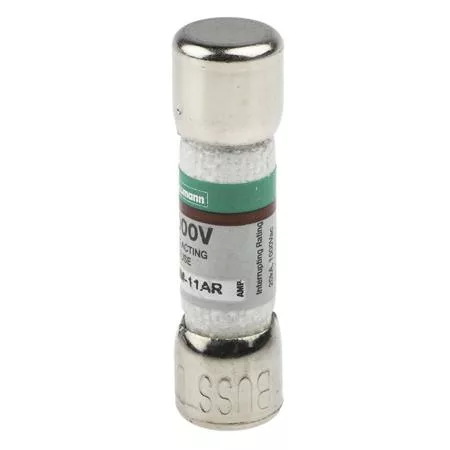
Introduction
Multimeters are versatile test and measurement tools essential for electricians, technicians, or DIY enthusiasts who are troubleshooting and testing electrical systems. These devices can measure voltage, current, and resistance. However, like any electronic device, multimeters can encounter issues, especially from electrical overloads, that need to be protected. One critical yet often overlooked component of a multimeter is its fuses–multimeter fuses. This guide provides a comprehensive understanding of multimeter fuses, covering their fundamental functions, significance, working principle, different types, selection parameters, and popular brands.
What are Multimeter Fuses? Definition, Functionality, and Features
Multimeter fuses are safety devices designed to protect the internal circuitry of multimeters and their users from electrical surges or overloads. These small, glass-enclosed components prevent damage to the multimeter’s sensitive components by breaking the circuit and preventing potential electrical hazards, including fire or electrocution. These replacement fuses consist of thin wires (filaments) that melt and ensure the reliable and safe operation of multimeters. Within a multimeter, the fuse integrates into the battery compartment or within its internal circuitry. Additionally, these fuses include fast blow or slow blow characteristics, specific amperage ratings, and compatibility with various multimeter models.

Understanding the Significance of a Multimeter Fuse
When measuring electrical currents, there’s always the possibility of encountering a surge or accidentally higher current than expected. A fuse in a multimeter acts as a safety feature and prevents damage to the device and potential injury to the user. Additionally, the significance of these fuses also lies in their ability to maintain the precision and reliability of multimeters in electrical systems with fluctuating electrical loads.
How Multimeter Fuses Work? A Brief Look At Their Operating Principle
Multimeter fuses work similarly to standard fuses. They safeguard a multimeter’s internal circuitry by breaking the electrical circuit when the current transcends a safe threshold. When an excessive current flows through the multimeter, the fuse’s filament melts, cutting off the circuit. This interruption prevents damage to the multimeter’s sensitive components and reduces electrical hazards to the user.
Current Rating, Voltage Rating, and Breaking Capacity of Multimeter Fuses
Multimeter fuses come with different current and voltage ratings and breaking capacities. The current rating signifies how much current the fuse can handle before it blows. This is usually written on the body of the fuse (in Amperes) or in your multimeter’s manual. Common current ratings for multimeter fuses are 400 mA or 10 A.
The voltage rating shows the maximum voltage at which the fuse can safely interrupt. It is crucial to select an equal voltage-rated fuse to or higher than the voltage you intend to measure. For example, a 250V fuse can safely break circuits up to 250 volts.
The fuse’s breaking capacity, also called interrupting capacity, defines the maximum fault current the fuse can interrupt without damage. For multimeters, the breaking capacity can range from a few thousand amperes to 10,000 amperes or more.

Popular Types of Multimeter Fuses Explained: Unveiling Their Features and Uses
Multimeter fuses come in a few varieties, and choosing the correct one is crucial for both functionality and safety. The three main types include:
High Breaking Capacity (HBC) Fuses
HBC fuses are fast-blow fuses designed to handle high current surges. They are filled with a sand-like material that helps contain any potential explosion caused by a high-voltage arc. They are typically used in higher-quality multimeters requiring robust safety.
Slow-Blow Fuses
Slow-blow fuses, also called time-delay fuses, are designed to tolerate temporary high-current surges, which are common in certain electrical measurements. They are particularly useful in environments with fluctuating current levels.
Glass Tube Fuses
Glass tube fuses are simpler and typically used in lower-cost multimeters. While they can handle large currents compared to HBC fuses, they are still functional in less demanding environments.
Why Multimeter Fuses Blow? Tips for Avoiding Blown Fuses
Fuses blow when there is a current exceeding their rated capacity. This usually happens due to user error, such as selecting the wrong function (e.g., measuring current when you intend to measure voltage) or accidentally connecting to a circuit with excessive current. Other factors include sudden spikes in voltage, accidental short circuits, and aging. To avoid blowing multimeter fuses, consider the following tips:
- Always double-check that your multimeter is set to the correct mode and range before connecting it to a circuit.
- Be mindful of where your probes are connected. Incorrect positioning can easily lead to a blown fuse.
- Only try to measure currents within the specified capacity of your multimeter.
How Often Should I Replace Multimeter Fuses?
A blown fuse is easy to spot where its glass enclosure will appear dark or blackened, indicating that the internal filament has melted. In some cases, the glass may even be cracked and should be replaced. However, if you find yourself frequently replacing fuses, it could indicate that your multimeter has an issue or how you’re using it. In some cases, it may be better to invest in a new, more robust multimeter designed for the electrical environments you’re working with.
Factors to Consider When Buying Multimeter Fuses: Exploring Top Multimeter Fuse Brands
Selecting the correct fuse is crucial for your multimeter’s performance and safety. These fuses are available from leading manufacturers, including Fluke, Martindale, Bussmann, Littelfuse, and Metrix. When shopping for fuses, the following parameters should be ascertained:
- Type of Fuse: Select the right fuse whether you need it for professional use or basic needs.
- Current and Voltage Ratings: Ensure the fuses align with the multimeter’s requirements.
- Compatibility: Match the fuse type and rating to your multimeter.
- Quality: Choose quality fuses to ensure longevity and safety.
- Price: Balance cost with quality, as cheaper fuses may compromise performance.
- Brand: Opt for manufacturer-recommended fuses to ensure reliability.
Final Thoughts
Multimeter fuses are compact yet critical safety devices that ensure both the safety of the user and the longevity of the tool. These replacement fuses can effectively safeguard the delicate internal components of the multimeter without compromising its functionality. Regular inspections, timely replacements, and adopting best practices for fuse handling can extend the lifespan of the multimeters and achieve reliable and safe results within electrical testing and troubleshooting tasks.





















